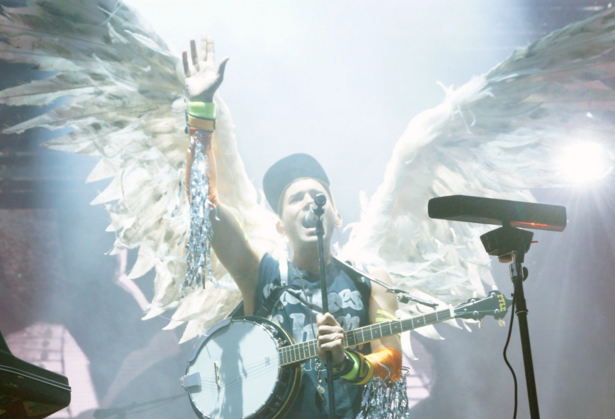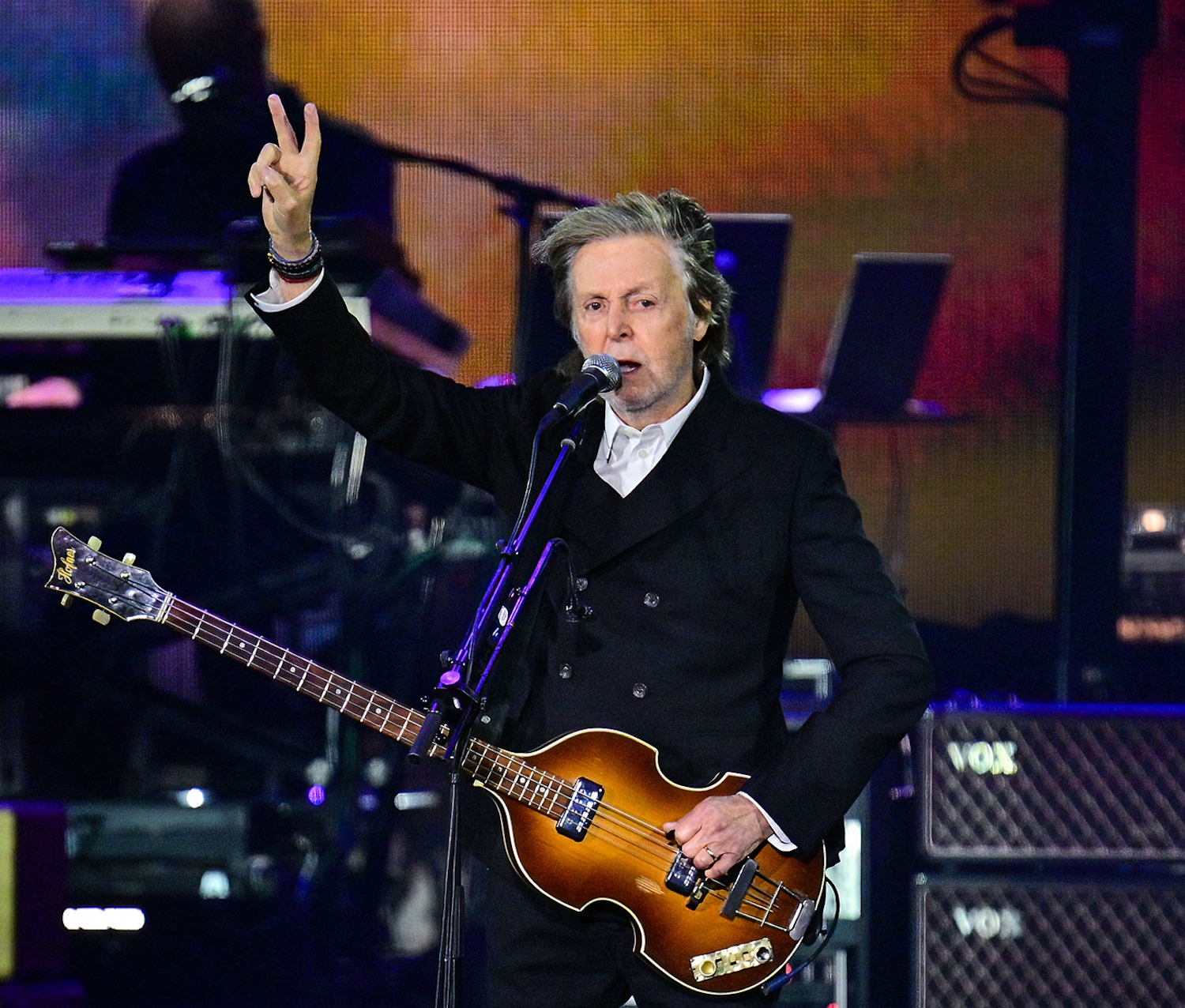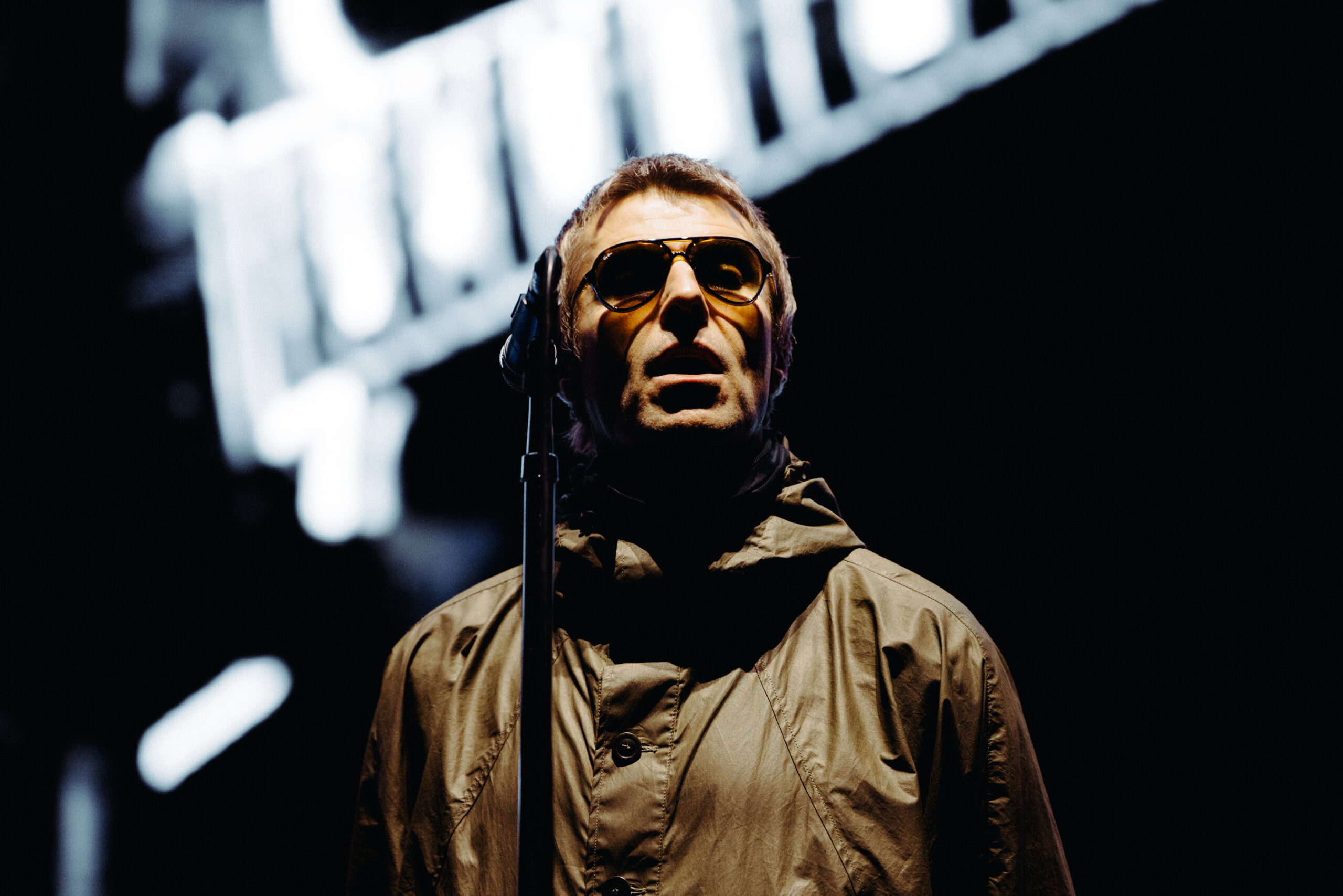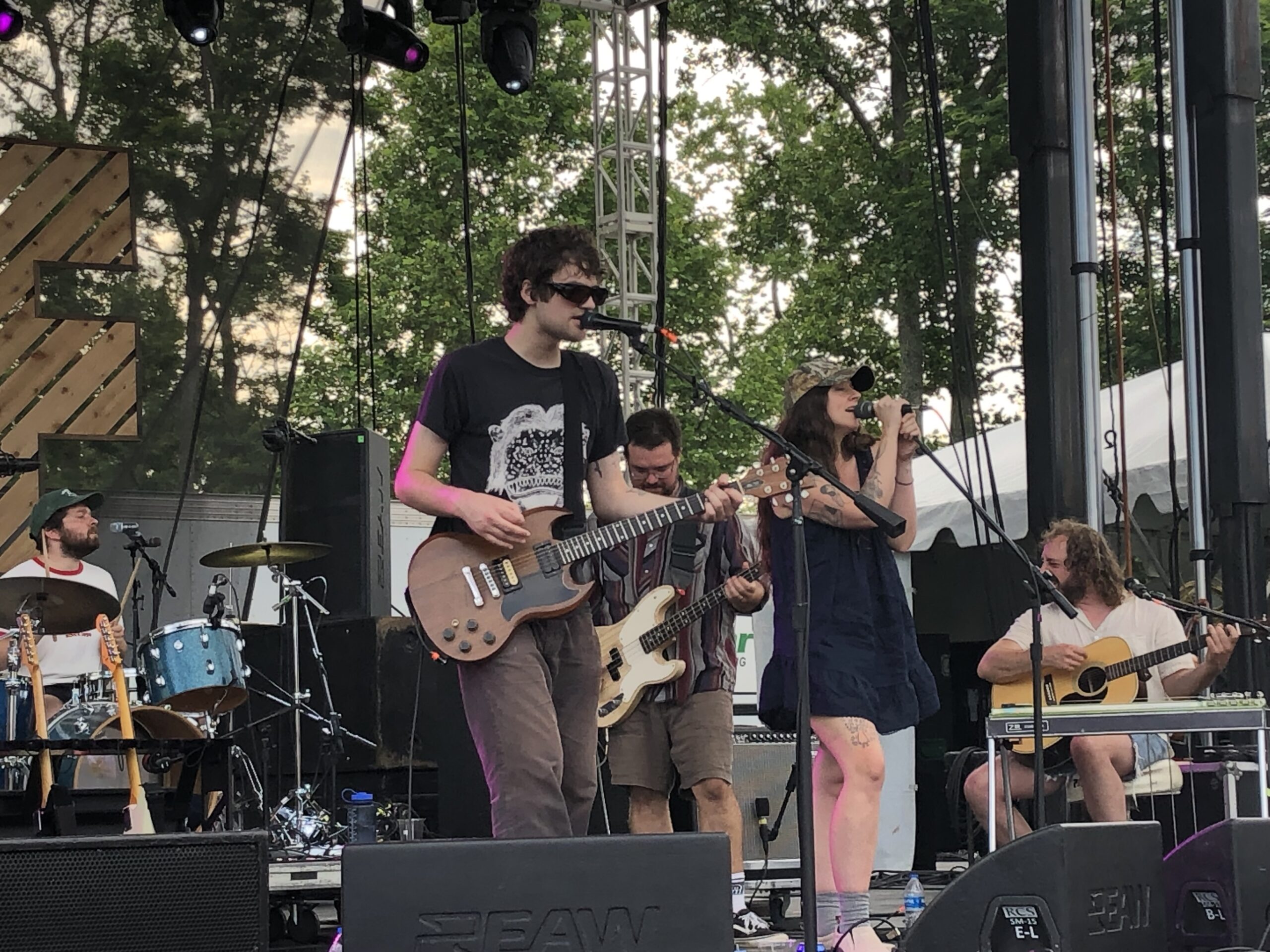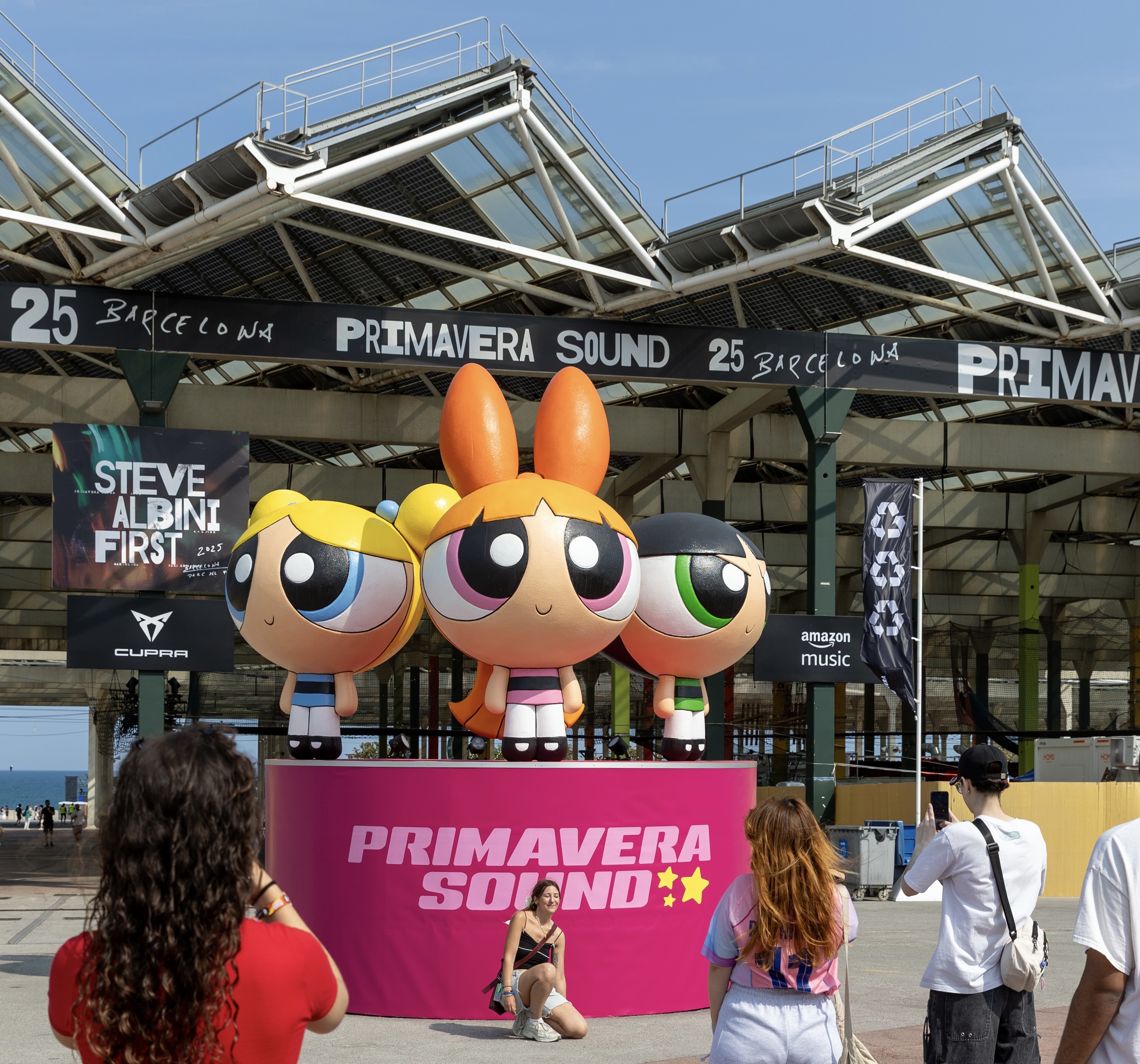Pitchfork Music Festival went down in Chicago over the weekend, bringing an assortment of acts from across the musical spectrum to Union Park. The festival's universe of sound continues to expand, now encompassing the likes of jazz master Kamasi Washington, cult favorite pop singer Carly Rae Jepsen, and funk powerhouse Anderson .Paak alongside old indie staples like Broken Social Scene and Sufjan Stevens. Along with the usual infusion of new sounds came a surprising shortage of metal, punk, and rap artists, which took some of the visceral charge out of this year's event. But that didn't stop the acts who did take the stage from coming through with performances worthy of a highlight reel. Check out the best of the fest below.
Carly Rae Jepsen
Even after a decade-plus of poptimism, even after writing a weekly pop column for Stereogum for two and a half years, even after Stereogum and many other outlets rightfully ranked E•MO•TION among the very best albums of 2015, the sight of Carly Rae Jepsen on stage at Pitchfork Music Festival triggered major cultural whiplash. Just four summers ago, when "Call Me Maybe" was dominating pop radio, if you'd told me Jepsen would have Union Park rocking without a trace of irony just one presidential term later, I'd have more likely believed some impossible nonsense like the Republicans nominating Donald Trump. Yet there she was, bouncing and smiling through jam after jam, laying waste to everyone who appeared before her. The songs were impeccable sparkling constructions, and she performed them with joy and expertise, completely seizing her moment. It was a reminder to some of the weekend's lesser entertainers that in this context, on such a massive stage in front of so many people, a merely acceptable performance is frankly unacceptable. --ChrisA photo posted by Felicia Morales (@feliciamorales) on
Broken Social Scene
When the Pitchfork lineup came out, I was shocked to find out Broken Social Scene would not be headlining, especially on the weakest day of the festival. No shots at Beach House, but as demonstrated Friday, BSS are the full package, capable of pulling off a wide range of styles and dynamics without losing their sense of self. Without a new album to promote, the set mostly comprised greatest hits, save for "Gonna Get Better," the promising new low-key jam they had debuted the night before. But man, those greatest hits were really great. The early part of the set focused on the 2005 self-titled album, and its sequence of "Ibi Dreams Of Pavement" into "7/4 (Shoreline)" into "Fire Eyed Boy" whipped up waves of melodic guitar energy and communal bliss. Even better, though, was the triumvirate of You Forgot It In People tracks tacked on the end. Their signature ballad "Anthems For A Seventeen Year Old Girl" built to a more humongous climax than I could have imagined, even without Emily Haines on stage for authenticity's sake. (No Feist either, for shame.) Then came "Cause = Time" and "KC Accidental," two driving rock epics with guitar parts so effective as hooks that they basically compel you to sing along with their wordless melodies. --Chris
Shamir
Artists don't often play festivals twice in two years, especially when they don't have a whole bunch of new songs to trot out. But for Shamir Bailey -- even though he was playing the same stage as last year, in about the same time slot -- it made sense. Full disclosure: Shamir's producer/manager is one of my best friends, so I am invested in this kid. But I would be even if I didn't have that connection, since his music is great and his whole persona is so sunny and likable. And so it was a blast to see how much things have changed since last year. He's more comfortable onstage now, more in control of his own inimitable joy-blast of a voice. And he's got more of a connection with a crowd who, by now, knows him. The throng who turned out for Shamir, skipping both Broken Social Scene and Beach House to see him, knew his hooks and his breakdowns and his big moments, and they reacted rapturously to everything he did. On a festival that, at least this year, puts most of its focus on inward-directed headphones music, I took great pleasure in seeing back-to-back sets from Carly Rae Jepsen and Shamir, two euphoric sunshine-blast pop auteurs, stealing the show on day one. --TomA photo posted by Maven (@mavenmusicco) on
Circuit Des Yeux
Sometimes, the early-afternoon bookings at Pitchfork can feel like science experiments, like the bookers are throwing way-out bands like noise-rock smashers Girl Band or freewheeling scuzz-punker Royal Headache out there just to see how many people they can scare away. I thought that might also be the case when drone experimenter Circuit Des Yeux opened up the main stage on Saturday. But Circuit Des Yeux ended up being a perfect choice, her expansive drawn-out ragas and spaghetti-western-soundtrack flourishes making for an ominous but lovely start to the day. Circuit Des Yeux doesn't seem like she should work as a hangover aide, but sitting out in the sun while she and her band churned was a restorative experience. --TomA photo posted by Julian Ramirez (@exhaustedwriter) on
Digable Planets
The amiable, shuffling early-'90s rap of the Digable Planets has aged remarkably well, and so have the Planets themselves. They really only play a few shows a year, but they float across that stage with a rare casual grace. Live backing bands don't often work out well for rap groups, but the Planets have a great one, and their dynamic works beautifully with the organic push-pull that comes from playing with actual humans. In beautiful mid-afternoon sunshine, there's very little that sounds as pleasant and welcoming as their easy, fluid jazz-rap. And they all seem happily surprised that people still care. "How do you know this?," erstwhile Shabazz Palace Ish "Butterfly" Butler wondered when he saw the crowd reacting to 1993's anthemic "Rebirth Of Slick (Cool Like Dat)." "This song is older than some of you." --TomA photo posted by Silvia Rivera (@vocalo) on
Jenny Hval
There's a time and a place for performance art, and musical festivals are usually not it. Jenny Hval is a rare exception because (a) her pretentious bullshit is the kind of pretentious bullshit that's nearly impossible to look away from and (b) the music accompanying it is good -- like, really fantastically great. Saturday at Pitchfork, Hval's antics involved blue paint splattered on the crotch of white jumpsuits, a "comedy" clown and a "drama" clown hugging and/or humping, some kind of open-mic situation that involved reading the stage directions with increasingly orgasmic intensity, a swan-shaped inner tube, and nude bodysuits. I am not fit to interpret all this, but the music -- jarring electronic beats like an extremely primitive Nine Inch Nails matched with increasingly dramatic and discordant keyboard swells that amounted to New Age music for uneasy listening -- certainly lent it an air of depth and sophistication. --Chris
Savages
Of all the privileges afforded me as a professional music critic, seeing Savages destroy a festival audience twice in one summer is angling for the top of the list. As at Primavera Sound last month, they made their case for the role of greatest rock band on Earth. Here's what I wrote back then: "Every member of the band was on fire -- combustible guitar, crushing bass, and punishing drum detonations were all topped off by an inspiring display by [Jehnny Beth]. She bellowed, she screamed, she crowd-surfed, she cast glances at the audience capable of enticing, enlivening, and destroying you." All that played out again Saturday at Pitchfork, and it was every bit as exhilarating as the first time, as if they can just flip a switch and blitzkrieg you into ecstasy. --Chris
Anderson .Paak & The Free Nationals
Anderson .Paak is more of a singer than a rapper and more of a funk-bandleader showman than either. That much was clear watching .Paak absolutely tear into a huge third-stage crowd, going opposite both Brian Wilson and Sufjan Stevens and still drawing a bigger, more enthusiastic crowd to that stage than I've ever seen. Sometimes, you can see someone early in their career and realize that they are absolutely built for this, that they'll be playing festivals for years and years, to bigger and bigger crowds. That's Anderson .Paak right now. He's a fireball of energy, careening across stages and occasionally hopping behind a drum kit. He's a ragged and urgent singer, but a controlled one. He's a generous collaborator, sharing his stage with fellow festival act BJ The Chicago Kid. And he loves being onstage. Back in the wooded third-stage area, there were so many people that I could barely move. And after this summer, I don't expect to see .Paak on the smaller festival stages ever again. He's got bigger things in store. --Tom
Sufjan Stevens
Sufjan Stevens walked on stage with angel wings attached to his back, he and his bandmates dressed in black and yellow outfits that my colleague Tom later described as TRON: The Musical, and began singing the apocalyptic folk-rock title track from 2004's Seven Swans. It is a song that demands spectacle, blooming from eerie quiet to horrifically majestic bombast, and spectacle is exactly what Sufjan and company delivered: explosive post-rock clangor, Sufjan's arms and wings stretched out under the spotlight, a swirl of heavenly sights and sounds that sent tingles through my entire body. Not every attempt at stagecraft worked out so well -- near the end he wore a crown made of balloons and a gigantic shiny silver costume and nearly plummeted the whole show into sub-Flaming Lips quasi-posi glitter-encrusted cheese -- but for the majority of his career-spanning set, the band's playful and colorful look took a backseat to the beauty of Sufjan's catalog. His performance was a reminder that he's one of the most accomplished songwriters of his generation, able to knock you out with hushed ballads about death and ebullient road-trip sing-alongs alike. --ChrisSufjan Stevens closing out #p4kfest last night. Such a magical set.
A photo posted by Avo John Kambourian (@avojohn) on
Kamasi Washington
The first thing I saw at Pitchfork on Sunday was Marshall Allen, the regal red-bearded 92-year-old bandleader for Sun Ra Arkestra, standing at the center of the third stage, wearing a beautiful shiny red robe and playing a solo on an EVI, an electronic valve instrument that made him sound like R2D2 with Tourette's. A few hours after that, then, the idea of Kamasi Washington holding down a prime mid-afternoon main-stage spot didn't seem so far-fetched. And while jazz at a rock festival would've been hard to imagine a few years ago, Washington and his band are playing all of them this summer, and they know just how to approach it. At least to my neophyte ears, Washington and his band, which includes star-in-waiting singer Patrice Quinn, don't dumb down their jazz. They still go off on spaced-out tangents and clear out time for bass solos. But their take on the genre is so friendly and melodic and warm and energetic that those of us who aren't jazz people were as enthralled as the real heads. In his own way, Washington played a set just as crowd-pleasing as the one Miguel would play later in the night, and that feels like an achievement. --Tom
The Hotelier
Up until Sunday, Pitchfork Music Festival had never played host to an emo band. Hopefully the Hotelier's fiery set will convince them to keep expanding into this realm. There was a clear delineation between the edge-of-your-sanity explosions from Home, Like Noplace Is There and the misty chime-and-chug that defined this year's exquisite Goodness, but both versions of this band were a revelation, especially on a weekend when hardly anybody was rocking hard. There were times this weekend when it felt like indie rock really was dying off, but Christian Holden and company were another reminder that the genre's creative lifeblood is flowing into emo these days. --ChrisChristian Holden de The Hotelier #p4kfest #thehotelier
A photo posted by Danica Libny (@danicathrillho) on
Jeremih
Nobody told homeoff about it that it only made the set more charming. (Also, "I Gotta Feeling" is a great song, don't @ me.) Jeremih had none of the flash or polish of Miguel, who played immediately afterward. And he didn't show off his voice the same way, either, mostly halfheartedly singing over his own prerecorded tracks. But he did have hits, and a song like "Don't Tell 'Em" or "Oui" will always sound amazing on a sunny afternoon. He had special guest Chance The Rapper, who came out to do "No Problems" and "Angels" and to cause general pandemonium. And in one of the day's most heartwarming moments, he had his mom. The set happened to fall on Jeremih's birthday and his mother's birthday, and he ended his performance dancing to R. Kelly's "Step In The Name Of Love" with his mother, a beautiful and genuine little moment. --TomChi town was represented well at #p4kfest and fans couldn't get enough! | photo cred: @alwaysunday
A photo posted by REVOLT TV (@revolttv) on
Miguel
Miguel is a born entertainer. In terms of his ability to step on stage and dazzle a crowd, Anderson .Paak and Savages' Jehnny Beth were the only other performers in his league at Pitchfork this year. And as usual, Miguel's set involved plenty of that: feats of vocal fluidity, physical dexterity, and songwriting prowess that suggest he's coming into his own as not just an impressionist but a worthy torchbearer for Prince, James Brown, and Michael Jackson. But beyond the flash and musicality, there was another dimension of his show that stood out, one that I haven't traditionally associated with Miguel. Before "Do You," he gave a speech about the need for diversity and the beauty of human connection. And a few minutes later, after an a cappella rendition of his new "How Many," he delivered a passionate plea to not let the outrage over Alton Sterling and Philandro Castile wither away, calling on his audience to actually do something to fix this broken country. He followed that with "Candles In The Sun" -- a song I'd never cared much for, suddenly infused with new power and weight. It all added up to my favorite set of the festival by a wide margin. --ChrisA photo posted by Victoria Sanders (@veesanders) on
FKA twigs
FKA twigs never breaks character. It's hard to play a festival main stage -- let alone headline it -- without doing at least a little bit of "how are you guys feeling?" pandering. But that's not who twigs is. Instead, she presented a vision of pop-star futurism -- like if Janet Jackson and Björk had somehow become the same person, or like the blue alien lady from The Fifth Element had touched down on that Union Park stage. Twigs' band made her twitchy synthetic drones sound vast and physical. And she and her dancers reimagined the big-stage dance routine as deep, expressive performance art. All across the park, kids were making each other laugh by imitating twigs' dance moves, but there was nothing malicious in it; those kids were loving it. And though this was twigs' first-ever festival-headlining performance, the two new songs she sang -- including one with reggaeton drums and dancehall bass that sounded absolutely massive -- made it seem like she could be playing even bigger stages in a year or two. --Tom@FKAtwigs performing right now at #P4kFest // 📷: @mattliefanderson
A photo posted by Pitchfork (@pitchfork) on
